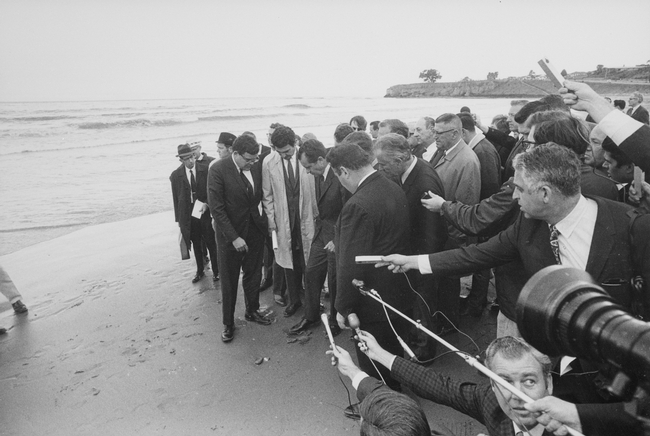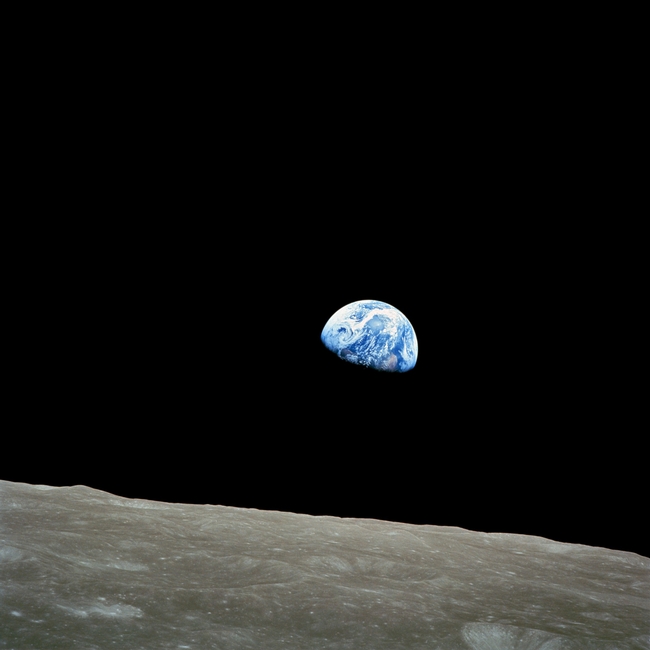My father was ahead of his time.
Years before Americans were asked to, Jim Hayden ensured that our family conserved energy by keeping the thermostat low, turning off lights and taking "military" showers to reduce water use. My father also observed the speed limit. Our family vacations took us to national parks. I grew up with a keen appreciation for the outdoors. I remember the sense of horror and helplessness when I saw the images of distressed wildlife in the aftermath of the Santa Barbara oil spill, which devastated the beaches that were an important part of our family's life.
In part as a result of that oil spill, Earth Day came into being. And 49 years after that inaugural Earth Day event, many of us will find ourselves at a gathering dedicated to increasing awareness of the environment that supports and sustains us all.
History of Earth Day
Earth Day was launched in 1970. Many factors contributed to the call for a national day focusing on environmental stewardship, including the publication of Rachel Carson's Silent Spring - serialized in the New Yorker - and the catastrophic oil spill that occurred off the coast of Santa Barbara in 1969. The Santa Barbara oil spill galvanized U.S. Senator Gaylord Nelson (D-Wisconsin) to call for a national day of locally inspired and organized "teach-ins" on the environment - a national "Earth Day." The Earth Day model was inspired by the spirit of campus activism at the nation's colleges and universities. It wasn't top-down, but rather a grassroots effort that encouraged communities to develop educational and service events around issues and topics important to them.
Earth Day struck a chord; some estimates suggest that 1 in 10 Americans participated in the first events. Earth Day is widely credited with "sparking" the modern environmental movement. Landmark environmental legislation swiftly followed (including the Clean Air Act, Clean Water Act and Endangered Species Act). The Environmental Protection agency was founded that same year. Twenty years after its launch, Earth Day became a global movement.
You can learn more from the Earth Day Network by linking to this website.
Take part. Learn. Act.
UC ANR research efforts support a healthy and sustainable environment
UC ANR is dedicated to supporting a healthy and sustainable environment. It's part of our core mission. Highlighted below are just a few of the many projects we're working on to protect California's natural resources, build climate-resilient communities and ecosystems, and promote healthy people and communities.
Seeking Street Trees that Can Cope With Climate Change
Trees play a vital role in shading and beautifying California's urban areas. UC ANR researcher Janet Hartin says that:
“Urban areas create heat islands, with dark asphalt surfaces reradiating heat. Cities can be 10 to 20 degrees warmer than the surrounding environment."
Trees provide other benefits, including improving soil health and stability, providing habitat for wildlife and serving as a source of beauty. But climate change (resulting in reduced rainfall and higher temperatures) can create chronic stress in some street tree species.
To find a solution, UC Cooperative Extension scientists are partnering with the U.S. Forest Service "in an unprecedented 20-year research study to expand the palette of drought-adapted, climate-ready trees for several of the state's climate zones."
“The idea is to look at available but under-planted, drought-tolerant, structurally sound, pest resistant trees for Southern California that do well in even warmer climates,” said Janet Hartin, UCCE horticulture advisor in San Bernardino County.
Learn more - including what tree species might be planted in your area - in this terrific read by Jeannette Warnert.
CDFA and UC ANR join forces to advance Climate-Smart Ag
A new partnership between the California Department of Food and Agriculture (CDFA) and UCANR aims to advance climate-smart ag in California. More than $1 million has been used to hire 10 UC Cooperative Extension community education specialists, who are being deployed to 10 counties to help farmers participate in CDFA programs that increase the adopting of "smart" farming and ranching practices.
The primary focus is putting into action on-farm solutions to improve (and increase) smart farming practices that reduce greenhouse gas emissions. Practices that improve soil health, nutrient management, irrigation management, and more will be emphasized.
Learn more about this innovative program here.
Be kind to the Earth by reducing food waste
Nearly 40 percent of the food produced in the U.S. is wasted and much of that waste ends up in landfills (definitely not good for our environment or the economy). The National Resources Defense Council estimates that the average family of four throws out nearly 1,000 pounds of food each year, wasting roughly $1,500. Consumers as a group waste more food than farms, grocery stores or restaurants. For tips on ways you can reduce #FoodWaste, click here. Related Reading: What a World War I Poster Can Teach Us About #FoodWaste.
4-H Sustainable You! summer camp to be offered in Ventura County
The UCCE Ventura County team will once again be hosting its week-long 4-H Sustainable You! summer day camp at UC's Hansen Agricultural Research and Extension Center (HAREC) in Santa Paula. Campers aged 9-12 are invited to spend time on a working farm, learning what it means to be sustainable through fun activities based around the five major themes: Air, Land, Energy, Water, and Food. Registration information can be found here.
For more than 100 years the UC ANR 4-H Youth Development Program has taught generations of California children about food, agriculture, leadership, and community service using learn-by-doing practices. The California 4-H Science, Engineering and Technology (STEM) Initiative seeks to increase science literacy and help address the growing need for scientists, engineers, and technical experts. 4-H empowers youth with the skills to lead for a lifetime.
Interested in learning more about 4-H in your community? Visit our statewide 4-H program page.
The above photo is one of my favorites. It was taken by Apollo 8 astronaut Bill Anders on Dec. 24, 1968, while in orbit around the moon. It shows the Earth rising for the third time above the lunar horizon. It always serves to remind me that my individual actions do matter, and when considered with the actions of others, contribute to real change ... the "moon shot." Have a great Earth Day!

